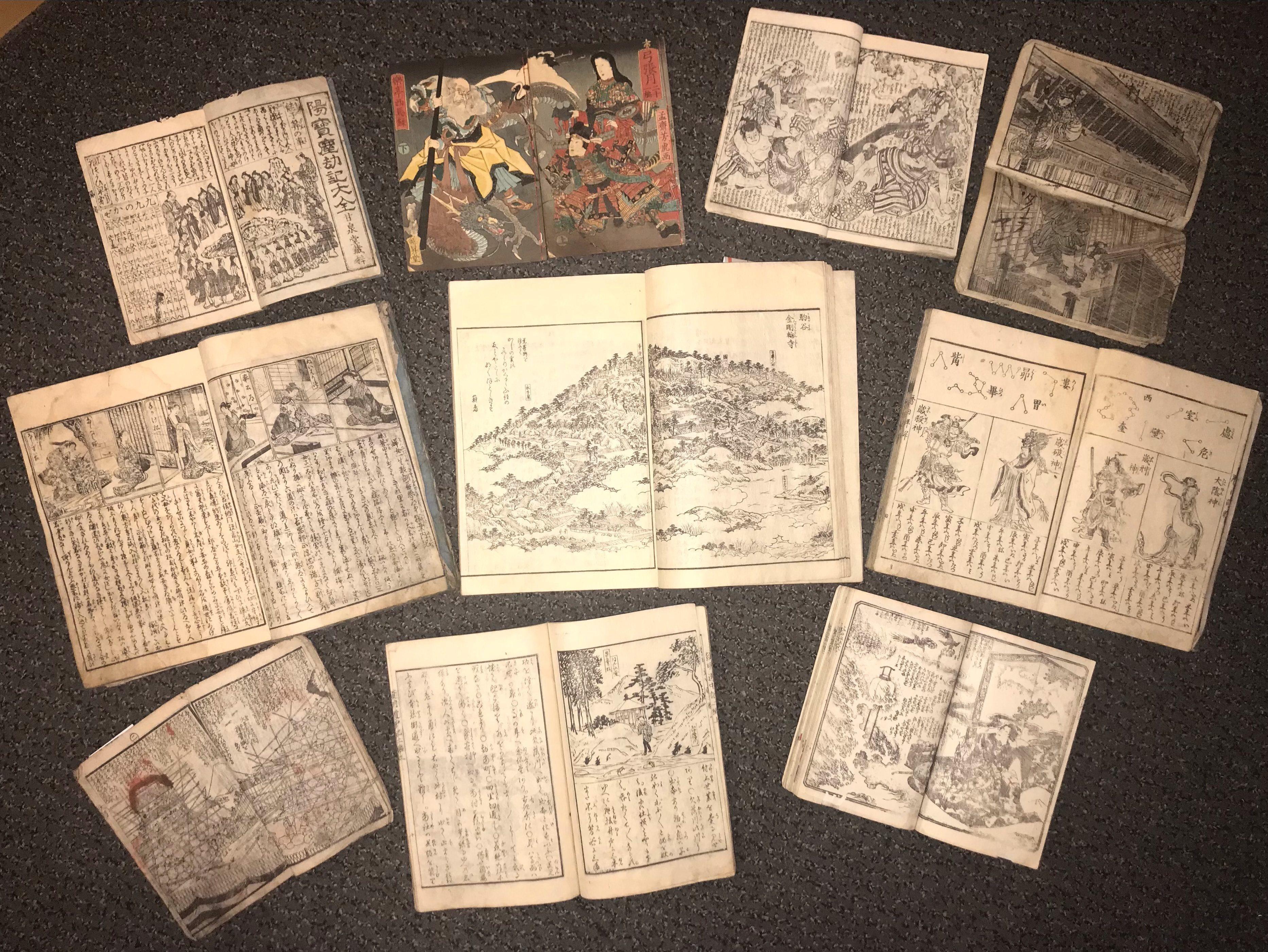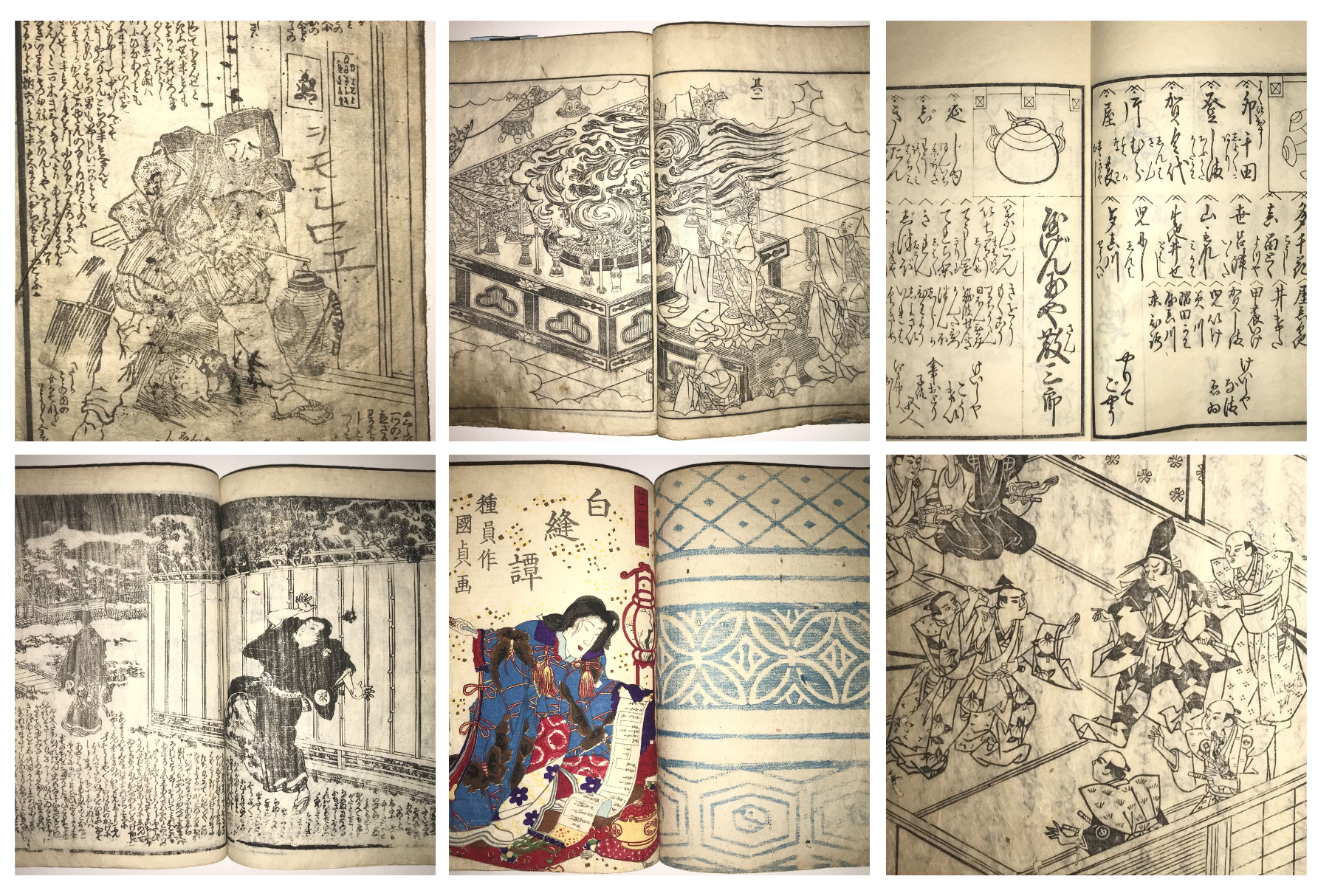ABA News
National Book Collecting Prize Winners: Joseph Bills - Illustrated texts as living objects in eighteenth and nineteenth-century Japan

An interview with the 2022 National Book Collecting Prize joint-winner Joseph Bills.
Congratulations again on winning the 2022 National Book Collecting Prize. How did you find out about the Prize?
While I was studying for my masters I was told about something called the Rose Prize, a book collecting award run by Cambridge University Library. I had already been building my collection for a couple years at that point so I thought I might as well enter, and was fortunate enough to be shortlisted and eventually selected as the winner. The library then informed me of the National Book Collecting Prize and recommended that I apply to it too. I had vaguely heard about it before but no specifics, so I looked into it and thought I should give it a go.
The title of your collection is ‘Illustrated texts as living objects in eighteenth and nineteenth-century Japan’. What drew you to Japanese print history?
Japanese books, or even Japan itself, was never something that I was interested in when I was younger. That only really started with my degree in Japanese Studies. When I originally went to university I had very little idea I would become interested in literature, I thought I was more cut out for history than anything else, but it was really thanks to my supervisor Professor Laura Moretti that I got interested in this field. I remember very vividly her showing us examples of Japanese early-modern books from her own collection and me finding them fascinating, and wanting to have one myself. I think it’s the variety of books being produced in early-modern Japan that really drew me in. The selection I submitted to the National Book Collecting Prize is only a tiny fraction of what was being published: there were illustrated “comic books”, guidebooks, textbooks, novels, encyclopaedias, religious texts, medical treatises, calendars, songbooks, jokebooks and so many more. They were printed in all shapes and sizes, using all different scripts and writing styles, utilising a plethora of binding technologies, and in high quantities. That’s without even mentioning hand-written manuscripts. It was naïve and indicative of how new I was to the field, but I didn’t expect that of an early-modern society. I would then come to find out that the literary landscape of Japan at the time was extremely advanced and commercialised. It all felt very modern, and I suppose my enjoyment boils down to being constantly surprised by the range and quality of what is/was out there. So overall, it was a combination of a rich print history with the right mentor to introduce me to it.

Before beginning work on this collection, had you collected books before and if so, what were some of your earlier collecting interests?
Actually no, this is the first time I’ve properly become invested in something like this. That’s not to say I wasn’t interested in books before, I always read a lot while I was growing up, but the closest I ever got to collecting was wanting a full set of a series. Active curation was never really something I did. So this all came with a steep learning curve as I basically pieced together my own way of cataloguing and organising, and I am grateful to all the other collectors I have had the pleasure to visit and learn from in this regard. The honest truth is I started with things I thought were interesting, and active collecting came after that. I also think there’s a little bit of a hoarder tendency hiding below the surface here, and you could definitely accuse me of that in the past!
Can you tell us more about the Tokyo sale where you were first inspired to begin collecting?
I only wanted to get one book I promise! As I mentioned above I was started on all of this by my supervisor at university, and she kindly introduced me to some bookstore owners in Jimbocho, the bookseller district in Tokyo. I went along to visit them and see what they had on sale, which were a lot of well-preserved and beautiful and very, very expensive items. Basically inaccessible to someone like me. Yet I’d been told there were plenty of books out there that you could get on the cheap so I asked one of these booksellers about it. He told me about a sale that goes on every Friday and Saturday at the booksellers’ union HQ and suggested I go along. I did, descending into this basement in a random building on a side street in Tokyo, and saw masses of piled up books. It was a bit of a kid-in-a-sweet-shop situation, not just because of the amount of offer but also because they were actually accessible and I could handle them. The first thing I bought was a maths textbook from 1890 just because I liked the look of it. So while I originally only went for one book I then kept coming back and seeing what was on offer, helped by how the selection changed every week. It was only through this physical interaction that I managed to build up an understanding of Japanese print history, so it became as much a continuous study session as anything else. And indeed, I still go whenever I can.

Your collection emphasises the material history of each item. What have you learned about the importance of the book as object through building your collection?
As I continued my studies I found myself more and more interested in “the material turn” in literature, i.e. the understanding that an author writes a text not a book. The actual content is important, but we often forget that it works together with the shape, material, size, marginalia, paratext and more to form the physical object that we hold in our hands. Bearing this in mind, what I wanted to emphasise in my submission to the National Book Collecting Prize is how each and every copy of a given book has its own unique history. For example, I own a number of illustrated books where the pictures have been coloured in by previous owners. For any one of those instances there could be as many surviving copies as you like, but I know that only the ones that I am holding have been coloured in that way by whoever those previous owners were. Effectively the physical item is a collaboration between an author/illustrator/publisher and its owner. This has allowed me to not worry about things like the condition or completeness of a book/series of books, because there is value to be found in more than just pristine first editions. I’m actually more interested if I find someone’s notes or signature. It shows that the book was read and connects me to someone on the other side of the world decades, if not hundreds, of years ago. And I think about how I am a part of this history as well now, which only makes me respect them even more.
The Book Collecting Prize came with £500 to help expand your collection. Have you already put this money to use, and if so, what have you acquired?
First let me say I am extremely grateful for the prize, which has allowed me to buy some more expensive and rarer items than I usually would be able to afford. Recently I’ve found myself more and more interested in old Japanese maps and sentimental cartography in particular. These are obviously a lot harder to get hold of nowadays as they were almost always single-sheet prints, which do not survive the test of time anywhere near as well as books do. I did manage to track one down to a bookseller in Osaka (by accident while flipping through an auction catalogue), and the prize money from the National Book Collecting Prize allowed me to purchase it. The item was produced in 1756 and there are not many of them left anymore, so I am very much thankful to ABA for their support.
What are your plans for your collection going forward, or do you have plans to explore a different avenue of book collecting?
I am now living in Tokyo so have gone right back in to the collecting mindset. I’m basically just planning to keep seeing more and more, and hoping to come across some gems in the process. I’ve always been more interested in what catches my eye than searching for specific items anyway (c.f. hoarder tendencies ↑). But as I continue in my research I will undoubtedly start to be on the lookout for anything that I recognise as well. I am intrigued by moving out of the early-modern period into the pre-war printing landscape, which is almost unrecognisable compared to the 1800s, and one day I might even delve into the world of manuscripts, so we’ll see where it goes from here.
